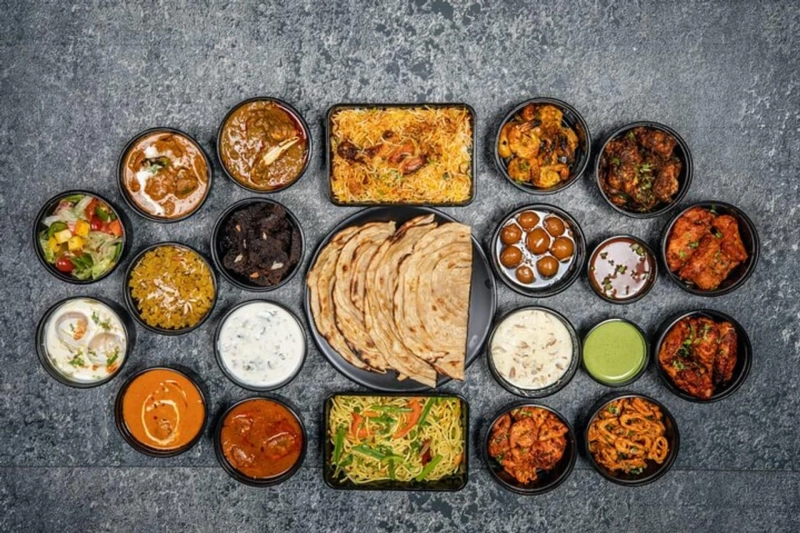India’s culinary heritage is one of the richest and most diverse in the world, and at the heart of it lies an unmistakable foundation: spices. More than mere flavoring agents, Indian spices play an essential role in expressing tradition, geography, and ancestral knowledge. In fact, anyone who embarks on an India Food Tour quickly discovers that spices are far more than ingredients—they are cultural artifacts with centuries of meaning infused into every pinch.
Spices as a Cultural Identity in India
From the bustling spice markets of Kochi to the aromatic kitchens of Lucknow, spices serve as a cornerstone of daily life. Each Indian region uses spices differently, resulting in a distinct regional cuisine that tells the story of local traditions, climate, and historical influences. The famous garam masala of the north is warm and robust, while southern blends like sambhar masala favor tanginess and heat. In eastern India, mustard seeds and panch phoron (a blend of five spices) dominate, reflecting the region’s love for subtle yet layered flavors.
This regional diversity is not random. It is a reflection of centuries of cultural development shaped by trade routes, migrations, and rituals. Spice usage often traces its lineage back to Ayurvedic principles, where every ingredient serves not just a taste function but also a medicinal purpose.
Spices and Their Role in Rituals and Celebrations
In Indian festivals and family gatherings, spices play a symbolic role as well. Turmeric, for instance, is revered in Indian culture. It is not only a key component in many dishes but also used in religious rituals and ceremonies, symbolizing purity and prosperity. Weddings, particularly in the south, include turmeric paste rituals to bless the couple with health and fortune.
Cloves and cardamom, apart from being widely used in biryanis and sweets, are often added to offerings made to deities. The act of cooking itself becomes sacred when it includes these spices, especially during festive meals and temple prasad (offerings). These are not arbitrary traditions; they have deep cultural roots that connect people to their communities and belief systems.
Historical Relevance of Indian Spices
The global fascination with Indian spices dates back thousands of years. India was a key player in the ancient spice trade, attracting merchants from Rome, Arabia, China, and eventually Europe. This global demand gave rise to spice routes and influenced world history, including the colonial pursuits of European powers.
Indian spices, therefore, are not just local treasures—they are international commodities that have shaped trade policies, colonial expansion, and cultural exchange. Pepper, cinnamon, and cardamom were once so valuable they were considered as good as gold. Understanding this history is key to appreciating why spices hold such esteem in Indian society.
Culinary Practices Passed Through Generations
One of the most compelling aspects of Indian spice usage is its inheritance through generations. Spice blending is not often written down; rather, it’s demonstrated by elders, learned through observation, and perfected by practice. Grandmothers across India measure with their hands, not spoons. They know just how much asafoetida to add to dal or how long to roast cumin seeds for chutneys.
This form of culinary knowledge represents lived experience—a key component of the E-E-A-T framework, particularly "Experience." It’s not just about knowing what goes into a dish, but understanding why and how it contributes to digestion, warmth, or even mental clarity. These insights can't be replicated with simple instructions; they are embedded in everyday life and storytelling.
The Science Behind Indian Spice Combinations
Indian cuisine is unique in its use of negative flavor pairing. While Western cuisines often pair ingredients that share flavor compounds, Indian recipes deliberately avoid overlapping compounds. For example, turmeric and black pepper do not share many flavor notes, yet they are paired together because black pepper enhances the absorption of curcumin, turmeric’s active compound.
This reflects a scientific understanding passed down long before modern laboratories existed. Many of these pairings are now supported by nutritional science, adding credibility to traditional practices. Thus, the spice combinations are not only delicious but also deeply intelligent.
Experiencing Indian Spices Firsthand
Travelers looking to immerse themselves in this sensory-rich heritage often choose curated Food Tour Packages in India. These experiences allow visitors to explore local markets, learn to identify fresh spices, and understand how different communities use them. It’s not just about tasting food but about comprehending the culture it represents.
Guided tours led by culinary experts provide context to dishes and ingredients, offering guests a more holistic understanding of Indian food traditions. From learning how to temper spices in hot oil to discovering rare regional blends, these journeys are educational and enriching.
Preserving Culture Through Everyday Cooking
In today’s fast-paced world, the act of grinding whole spices or preparing a masala from scratch may seem time-consuming. Yet, for many Indian households, these rituals are essential to preserving identity and memory. Cooking with traditional spices serves as a bridge to the past, a connection to one’s roots, and a form of resistance against homogenized food culture.
When immigrants recreate these flavors abroad, they’re not merely cooking; they’re reclaiming a part of their heritage. These spices carry stories, memories, and identities across borders, making them a powerful cultural anchor for diaspora communities.
Conclusion: More Than Flavor—A Living Tradition
Spices in Indian cooking represent more than just an explosion of flavor—they encapsulate centuries of history, ritual, and familial wisdom. They are central to understanding India’s vast culinary diversity and cultural resilience. Whether it’s through rituals, trade, or everyday cooking, the role of spices is woven into the very fabric of Indian life.
For those seeking to deepen their knowledge, exploring Indian spices for food offers a meaningful way to appreciate their historical, medicinal, and culinary significance. These ingredients tell stories, and by learning about them, we don’t just taste India—we begin to understand it.


